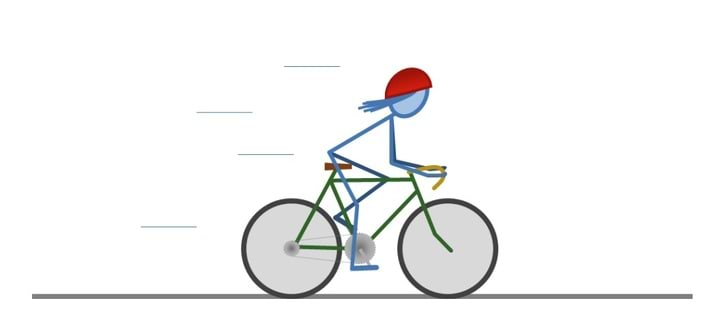Jalgrattur tunneb sõites takistusjõudu.
Takistusjõud suureneb, kui jalgratturi kiirus suureneb.
Millised järgnevatest väidetest aitavad selgitada, miks mõjub jalgratturile õhu takistusjõud? Vali igas reas sobivaim vastus.
| Jalgrattur lükkab õhku tee pealt eest | |
| Jalgrattur lükkab õhku edasi ja õhk lükkab jalgratturit tagasi. | |
| Kui jalgrattur kiirendab, siis hakkab õhk järjest kiiremini liikuma. | |
| Kui jalgrattur kiirendab, siis hakkab õhk talle mõjuma järjest suurema jõuga. |
